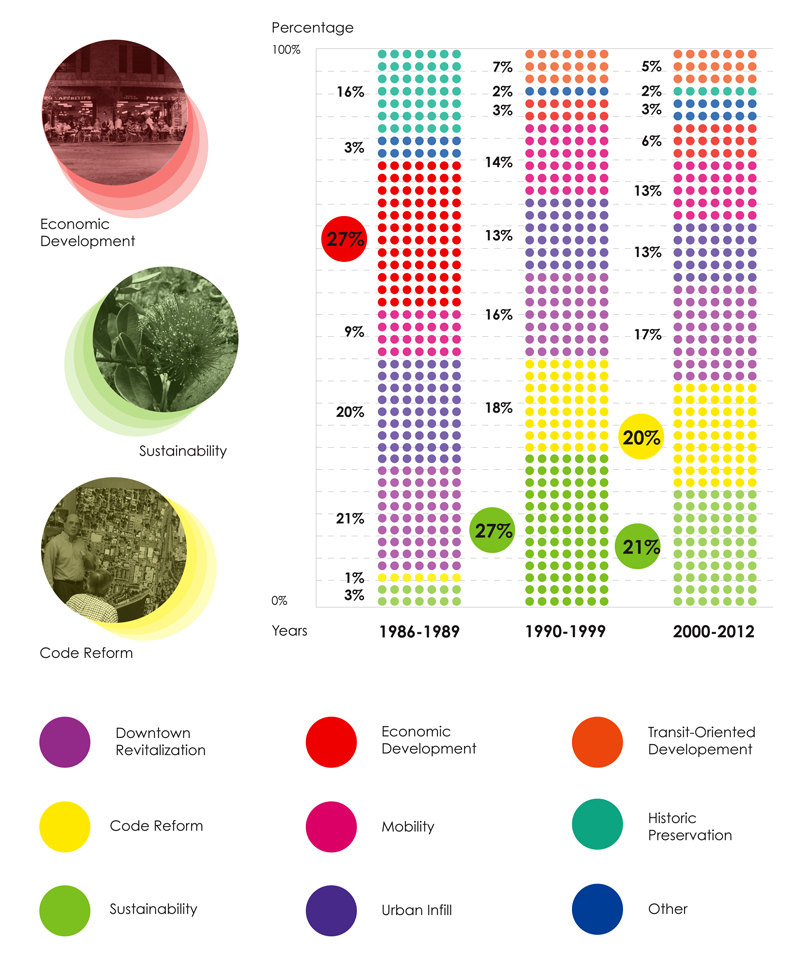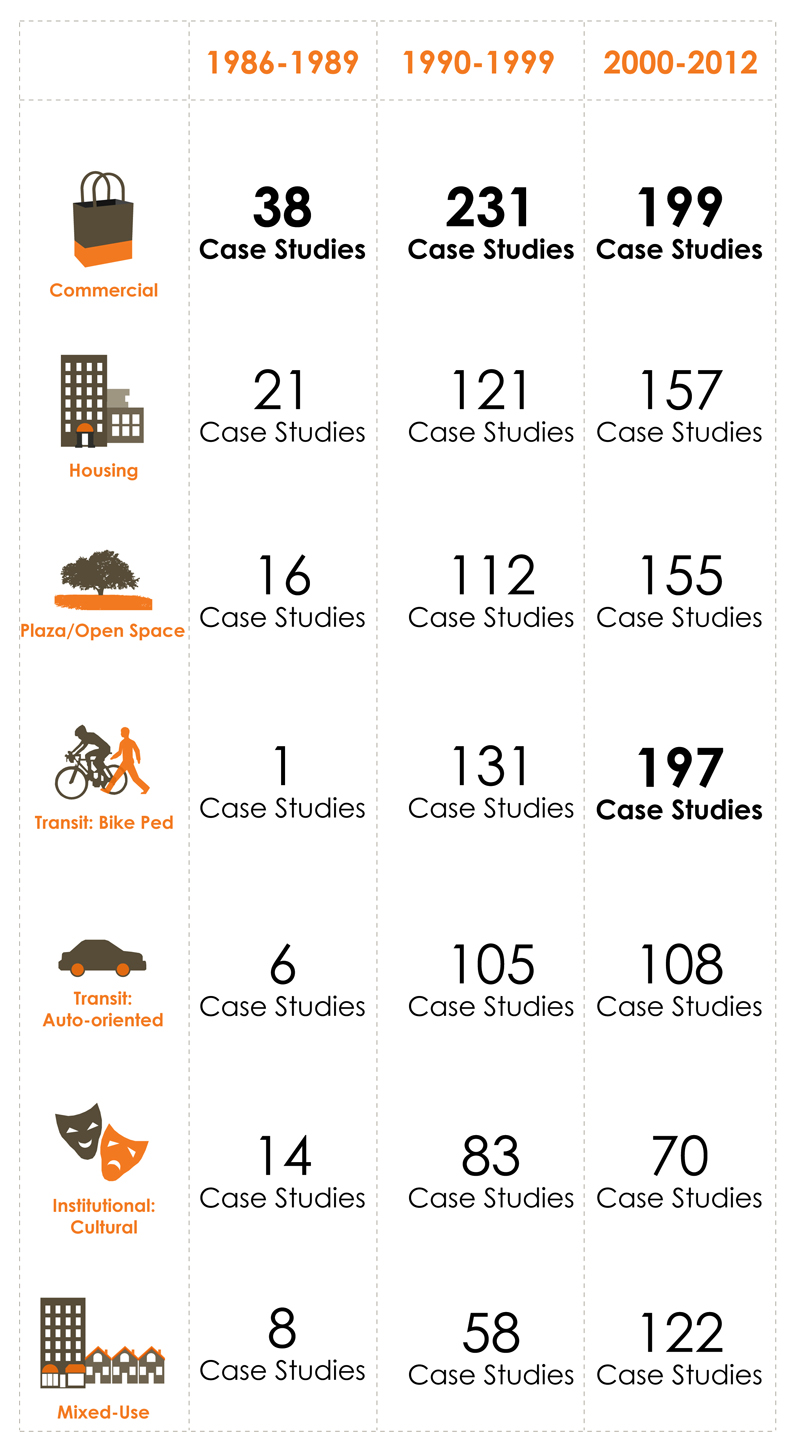From 1986 to 2011, we have seen code reform (yellow dots) and sustainability (green dots) themes surged in MICD case studies. A decline in economic development-related projects (red dots) during the 25-year period, however, does not necessarily mean that the issue was relegated. On the contrary, mayors and cities are now taking multi-pronged approach and addressing economic development comprehensively through a host of tools and strategies, such as policy reform, sustainability, neighborhood revitalization, mobility and transit, etc. The infographic below shows a detailed breakdown of MICD case studies by decade and topic:
CASE STUDY TOPICS BY DECADE

Individual components of MICD case studies have changed over time. Once seen as a discreet topic in and of itself, economic development now permeates all case study projects. If we look at a breakdown of the case studies by land use, the general trends are similar. Although commercial land use represented the majority of MICD case studies from 1986 to 2011, other land use topics, including housing, open space, bike/pedestrian, and transit-oriented development (TOD) have shown a dramatic increase over 25 years:
LAND USE TRENDS BY DECADE

This data indicates that mayors are starting to recognize that in addition to strong commercial and retail activities, infrastructure amenities such as parks, streets, and bike/pedestrian safety are critical elements that can improve in the quality of the built environment and the overall health and well being of their cities.
What will these numbers look like at the end of the decade as climate adaptation and resiliency, equitable development, smart growth, innovation and technology, changing demographics, and other emerging issues continue to shape public policy and define the role of design as a problem-solving tool inside city halls? Ironically, 2020 will give us a clear hindsight of what matters most to America’s mayors in city design today.

